Alumobility is a global organization that fosters collaboration between leading aluminum companies and downstream enabling-technology partners that are committed to driving value for automakers and consumers. The organization works to support the implementation of aluminum in vehicles through technical studies and thought leadership.
Recently, the organization presented a Last-Mile Delivery Vehicle (LMDV) concept during EuroCarBody’s 24th Global Car Body Benchmarking Conference on October 18-20 in Bad Nauheim, Germany. The LMDV concept was designed to highlight the superior economic and sustainability performance of an aluminum vehicle body (Figure 1), including cost of ownership and life cycle analysis. The presentation was given by three Alumobility representatives, Andreas Afseth, technical director of Constellium Bowling Green LLC; Karisma Leftinger, senior technical development engineer at Novelis, and Dr. Thomas Rudlaff, managing director of Alumobility.
“Presenting the results of this important study to an international audience of automotive engineers, designers, and manufacturers at the EuroCarBody conference makes perfect sense for Alumobility,” said Rudlaff. “Our first and foremost goal is to share the latest aluminum automotive technology, including forming and joining, with the automotive world to advance aluminum as the material of choice for vehicle bodies.”
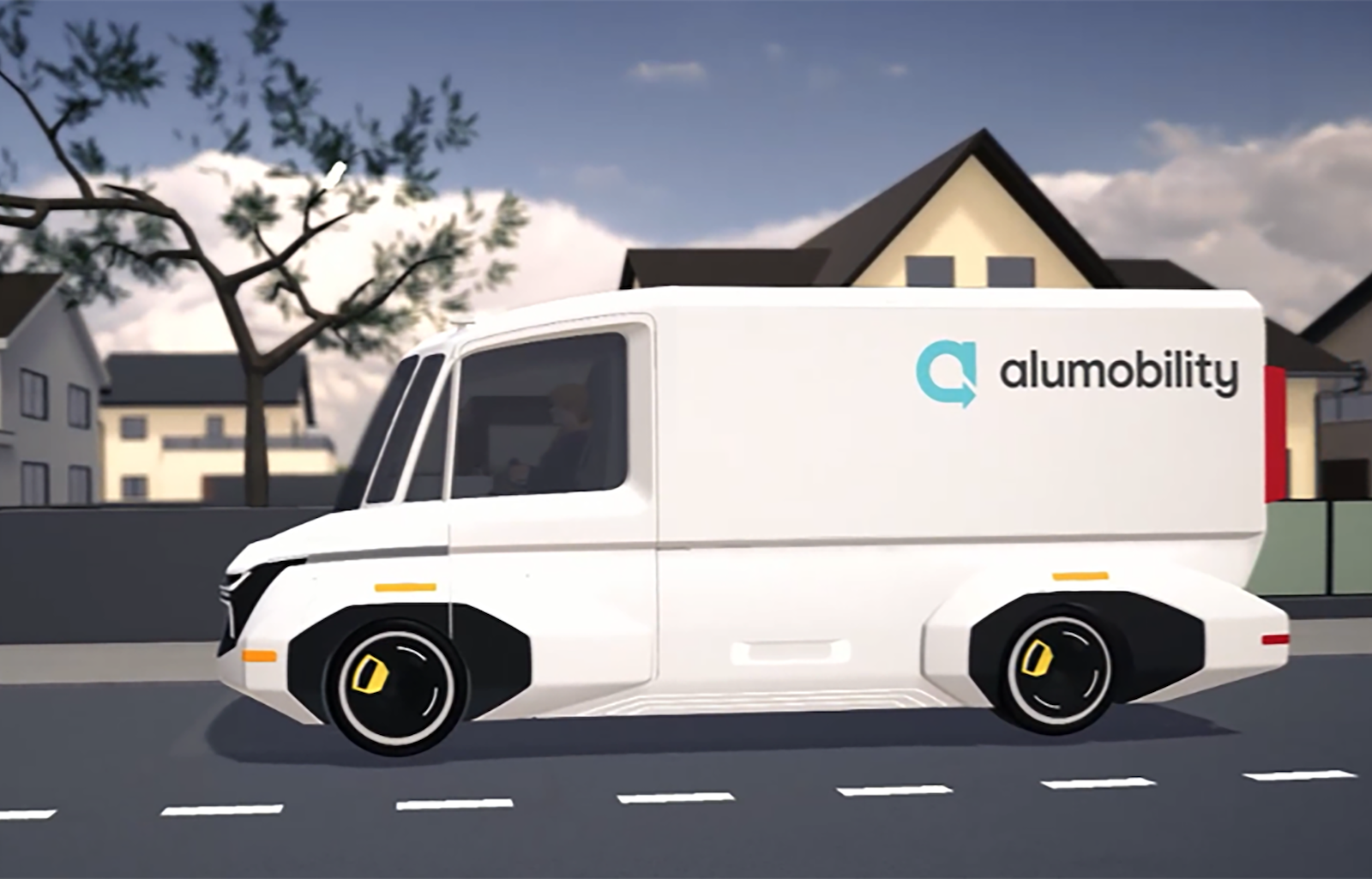
The LMDV Concept Study
As a result of the significant increase in e-commerce demand in the last few years, there is increased need for sustainable shipping solutions, particularly commercial vehicles. Generally speaking, in the e-commerce system, the customer places an order online (via computer, tablet, or phone) and the order is delivered to the manufacturer’s remote distribution center, who ships their product via cargo ship, airplane, or rail to a regional warehouse. From the warehouse, the product enters the “middle mile,” in which it is delivered via semi-truck to a local distribution center. The product is then delivered directly to the customer’s home or office using an LMDV (for example, UPS, Amazon, or postal trucks).
Since LMDVs navigate city and neighborhood streets, they typically have an average speed of 12 mph (19 km/h) over an average daily distance of 57 miles (92 km). Considering the number of delivery trucks on the road, these vehicles are an optimal application for possible lightweighting and reduced emissions.
In its LMDV study, Alumobility aimed to show how lightweighting could benefit these delivery vehicles. The study focused on developing an aluminum-intensive LMDV that would meet the requirements of similar steel benchmark vehicles in both internal combustion engine (ICE) and battery electric vehicle (BEV) designs. The key requirements for the study were to optimize the size and weight of the payload, mileage range, durability, and ergonomics for both driving and delivery.
In order to prepare for designing the aluminum LMDV, Alumobility studied existing vehicles on the market (Figure 2). The study provided the average mass for the body in white (BIW) for each vehicle, along with its cube size (which is measured by multiplying the width x length x height of the exterior of the vehicle). This research showed that the Mercedes Sprinter (a steel ICE vehicle with a hybrid engine option) and the Volkswagen Crafter (a steel vehicle with both ICE and BEV options) were the most efficient vehicles. Therefore, these were used as the baseline for the study.
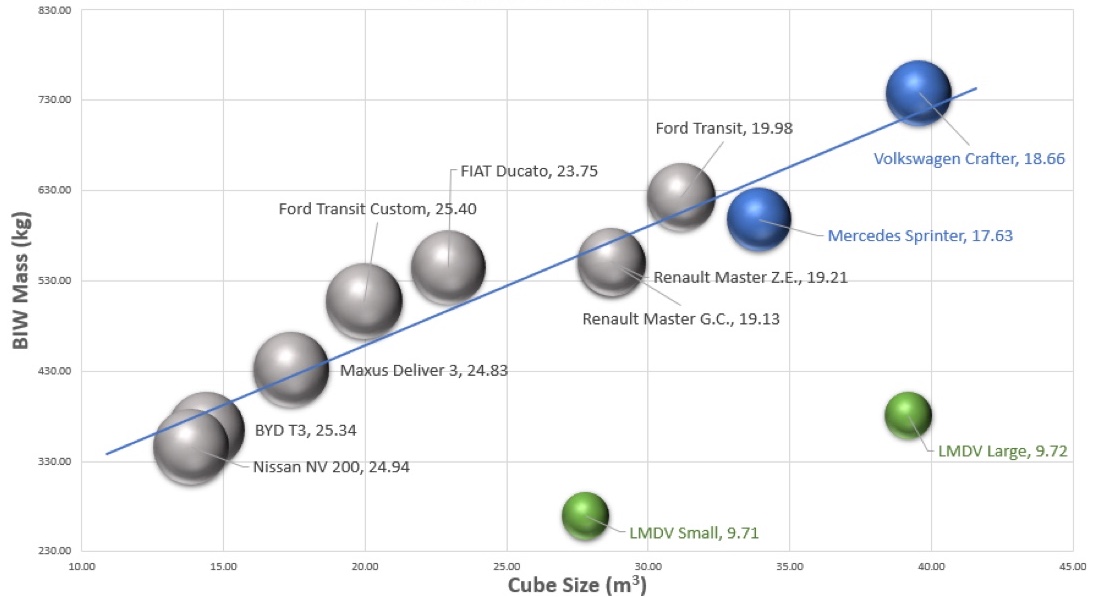
Study Results
The design of the aluminum LMDV showed a general weight reduction of up to 22% compared to the steel BEV version (Figure 3). In the bottom-up analysis (including the BIW, closures, and bolt-on parts), the aluminum BIW showed a weight savings of 47% over the steel BEV BIW, while in the top-down analysis (which also included the powertrain, chassis, suspension, and wheels), the aluminum version showed a minimum of 13% vehicle weight savings.
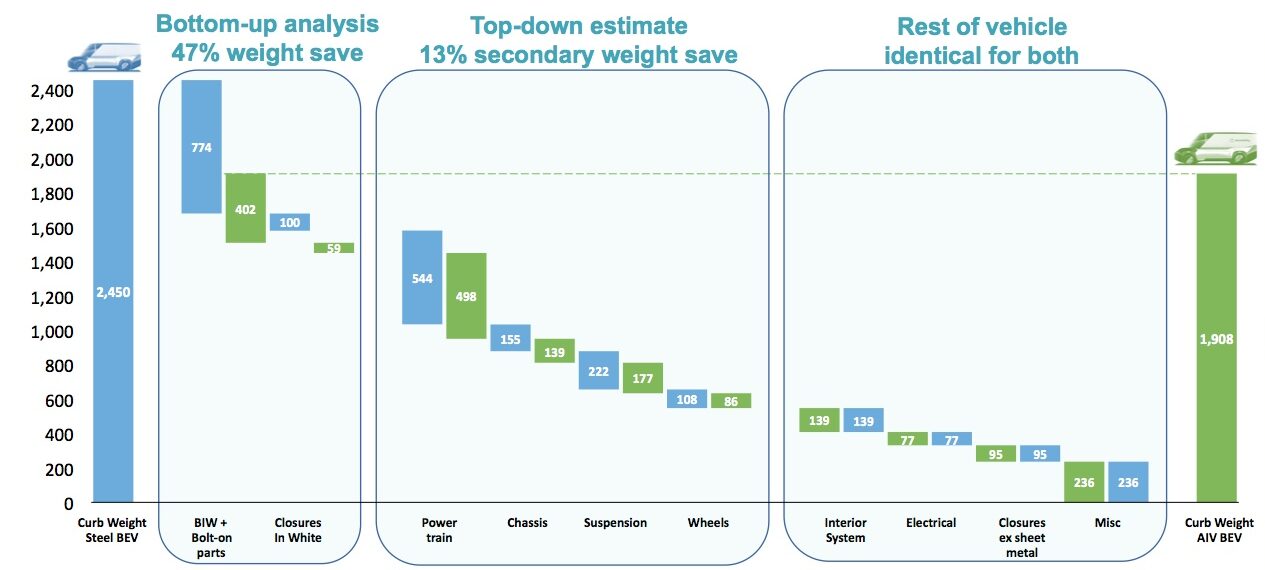
Generally speaking, higher weight reduces the vehicle range for BEVs and reduces the 0-60 mph acceleration time for ICEs. Therefore, in addition to comparing the vehicle weight, Alumobility considered battery and motor optimization for the vehicle. Various battery sizes and motor powers were calculated for the steel LMDV models in order to find the comparable range and acceleration for the aluminum version. Since the aluminum LMDV requires smaller batteries and less motor power than steel (Table I), the aluminum design can also provide secondary weight and cost savings.
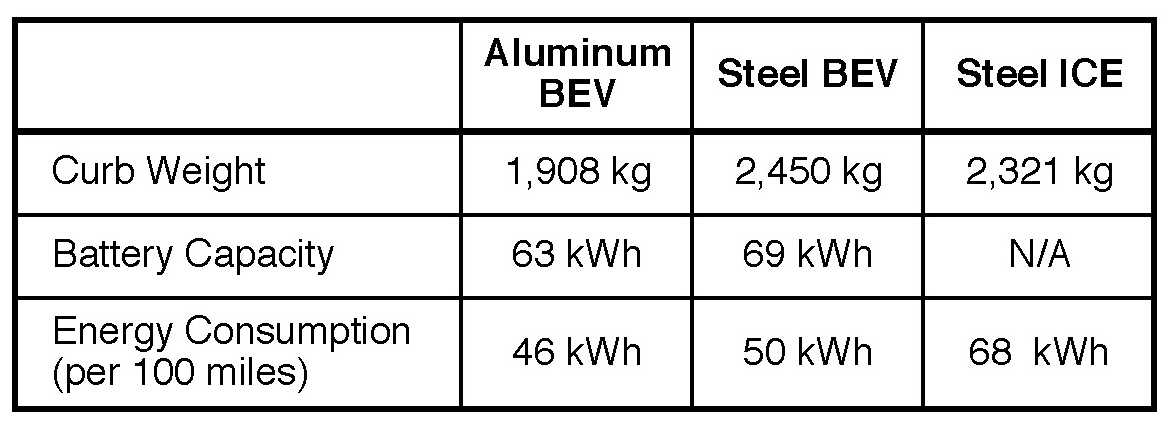
Alumobility also provided a life cycle analysis for both the aluminum and steel LMDV models (Figure 4), based on current best practices. The analysis considers a driving distance for each vehicle of 124,000 miles (200,000 km) and the use of 50% primary and 50% scrap in the manufacture of both the metals. The carbon footprint for aluminum was listed as 8.51 kg CO2e/kg Al for primary and 0.51 kg CO2e/kg Al for recycled material. The carbon footprint for the steel materials was listed as 2.08 kg CO2e/kg steel for primary and 0.48 kg CO2e/kg steel for recycled material. Information on the carbon footprint of each metal is compiled from the Aluminum Association’s 2022 LCA report for semi-finished products and the World Steel Association’s 2017 LCI report. Note that both reports represent preliminary results and are ISO compliant. The reports currently have a third party critical review in progress, so data may be subject to change.
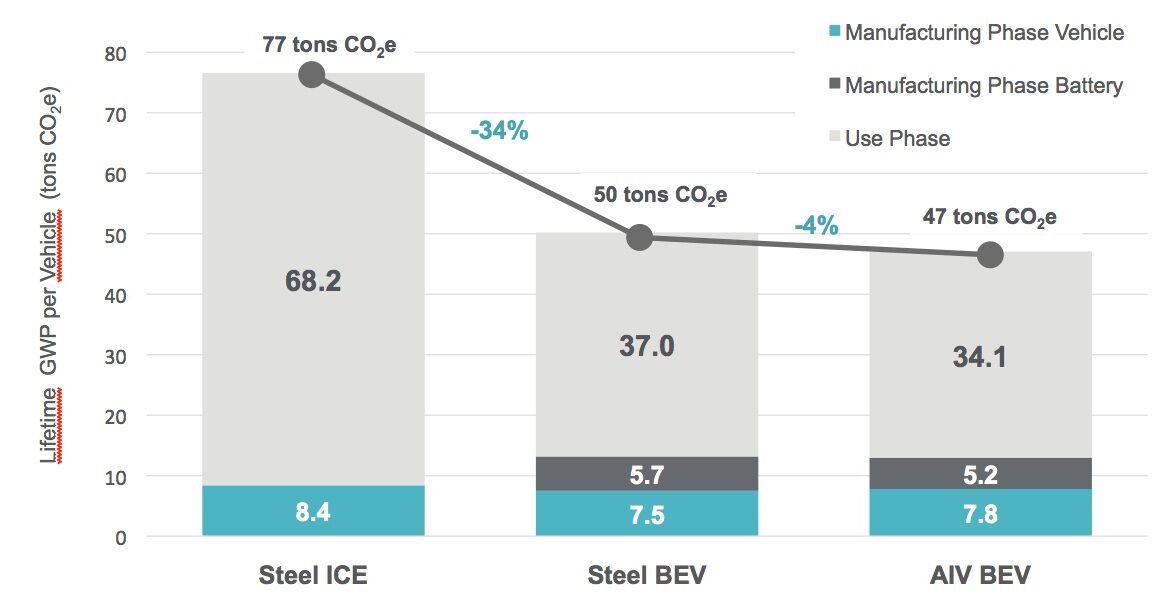
While it is well known that vehicles can significantly reduce emissions by shifting from an ICE to a BEV powertrain, the aluminum BEV concept showed an additional 4% reduction in emissions over the steel BEV model. The Alumobility study also showed that increasing the recycling rate of aluminum has the power to further improve the lifetime emissions advantage of aluminum-intensive vehicles over steel.
In addition to the life cycle benefits of using aluminum, the study showed that the aluminum-intensive vehicle provides cost saving benefits for automotive manufacturers. Due to the high cost of batteries, the reduced battery size on an aluminum vehicle enables the car manufacturer to reduce manufacturing costs. In addition, LMDV fleet owners have an opportunity to save on operational costs over the lifetime of the vehicle (Figure 5), as it delivers reduced energy consumption, better payload, less maintenance, and longer fleet life. As a result, the aluminum LMDV provides a 45% lifetime cost savings over the steel ICE model and a 5% cost savings over the steel BEV model.
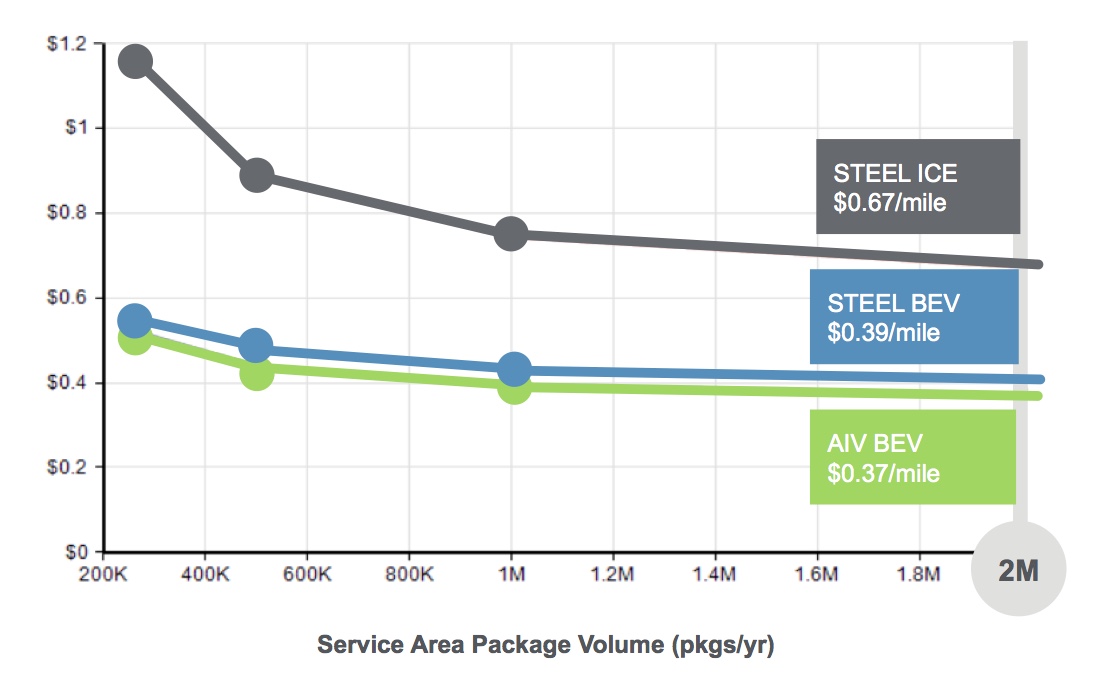
Summary
Alumobility developed the LMDV study to help accelerate the use of aluminum in automotive applications—particularly commercial vehicles. As the results of this study show, aluminum provides a significant value proposition for the commercial vehicle market (Table II). The significant weight reduction for the aluminum LMDV concept combined with an electric drivetrain results in a vehicle with much lower CO2e in all measured aspects. At the same time, the LMDV offers fleet owners a lower cost of ownership compared to a steel ICE or a steel BEV.
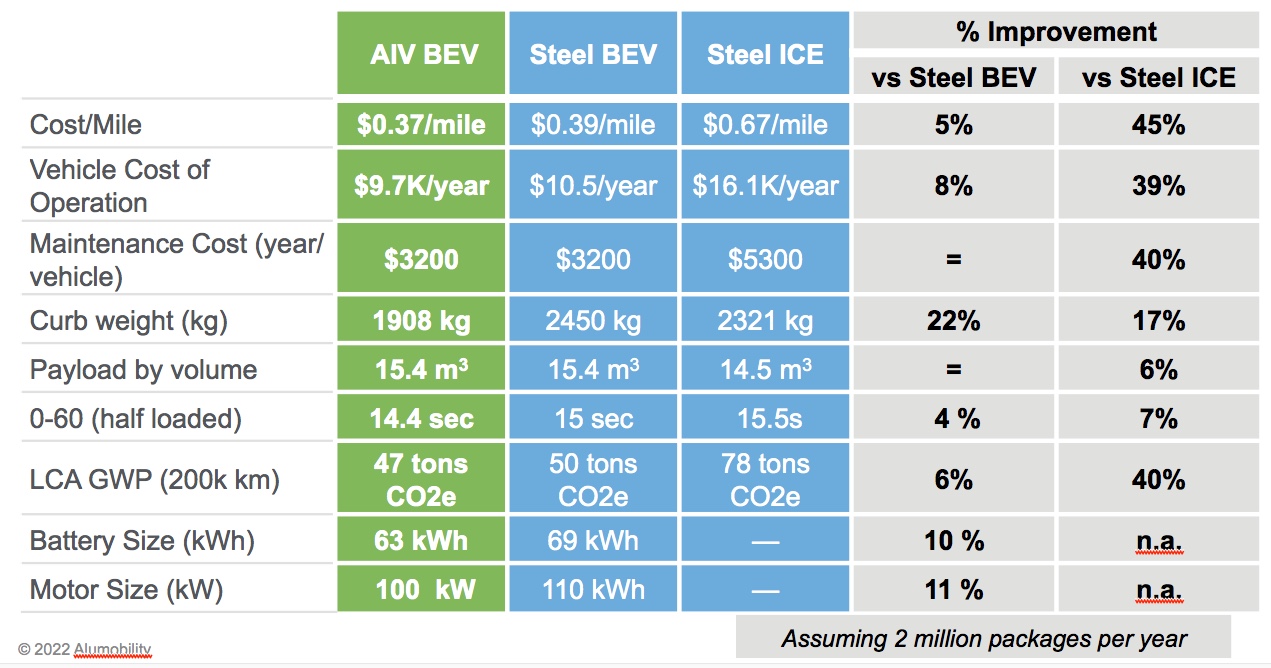
Editor’s Note: This article first appeared in the December 2022 issue of Light Metal Age. To receive the current issue, please subscribe.
